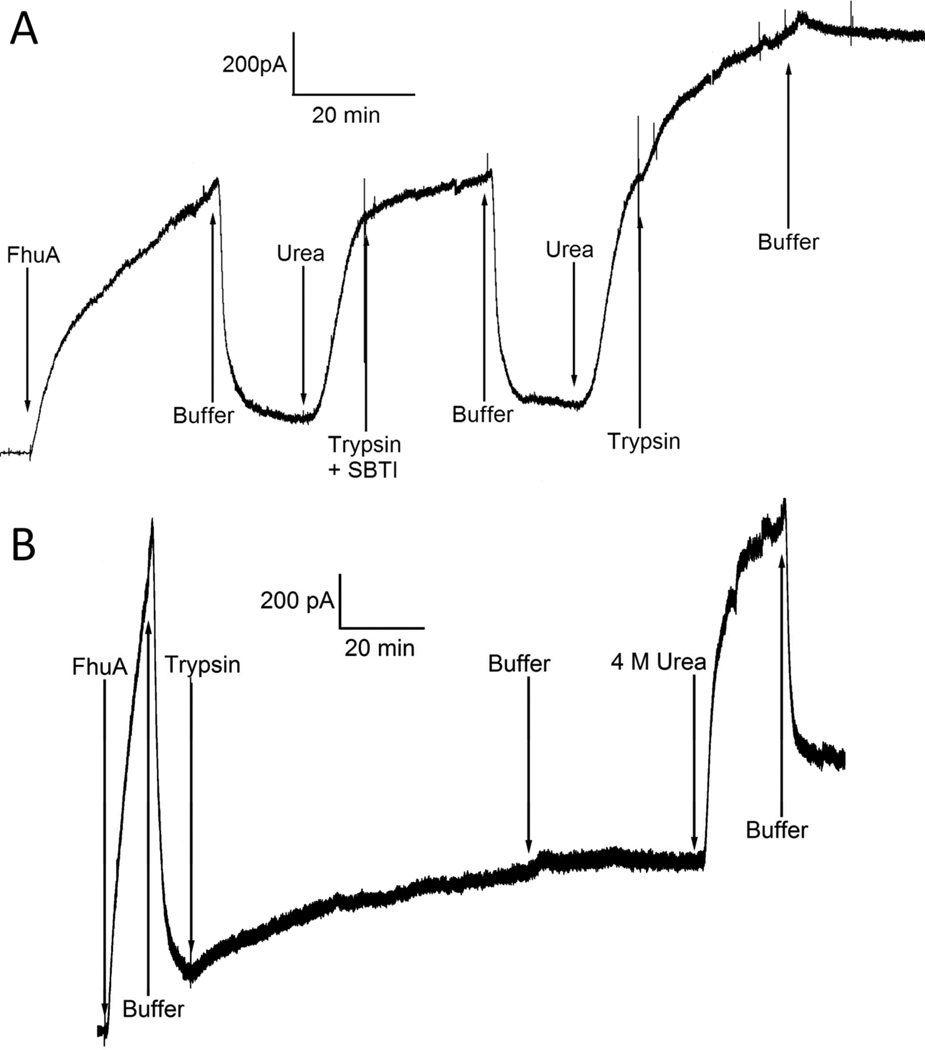Figure 2.
Trypsin in the presence of urea, but not in its absence, resulted in loss of reversibility of conductance. Both current traces begin with 4 M urea in the cis compartment and the voltage held at −20 mV throughout the experiment. A) Addition of FhuA (1.25 nM) to the cis compartment and removal of urea via buffer perfusion (labeled “Buffer”) resulted in the standard rise and fall, respectively, of conductance. Subsequent exposure of the membrane to cis trypsin (100 µg/mL) with bound soybean trypsin inhibitor (750 µg/mL) (labeled “Trypsin + SBTI”) in the presence of urea did not alter the conductance reversal level when the urea (plus trypsin and SBTI) were perfused out. However, addition of cis trypsin (100 µg/mL), without the trypsin inhibitor, in the presence of urea resulted in a conductance increase beyond that seen without trypsin, and, more importantly, there was little fall in conductance upon buffer perfusion of the compartment. B) Addition of FhuA (1.25 nM) to the cis compartment and removal of urea via buffer perfusion resulted in the standard rise and fall, respectively, of conductance. When typsin was added to the cis compartment (in the absence of urea) there was a small, slow rise of conductance that terminated after the trypsin was removed via perfusion with buffer. More significant, however, was the fact that now when urea was cycled in and out of the cis compartment, the response was similar to that seen when no trypsin was added. Contrast the final buffer perfusion in Figure 2B with that in Figure 2A.

